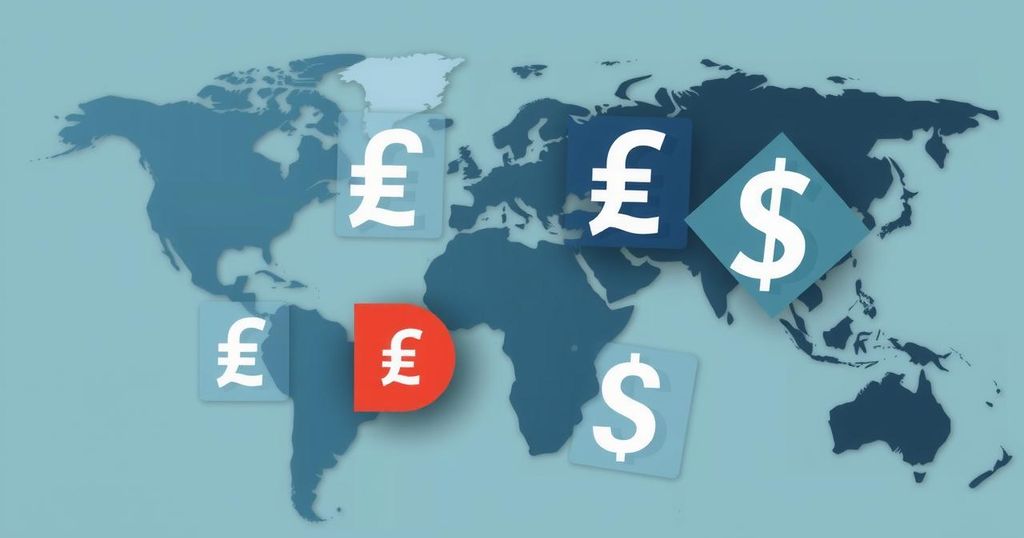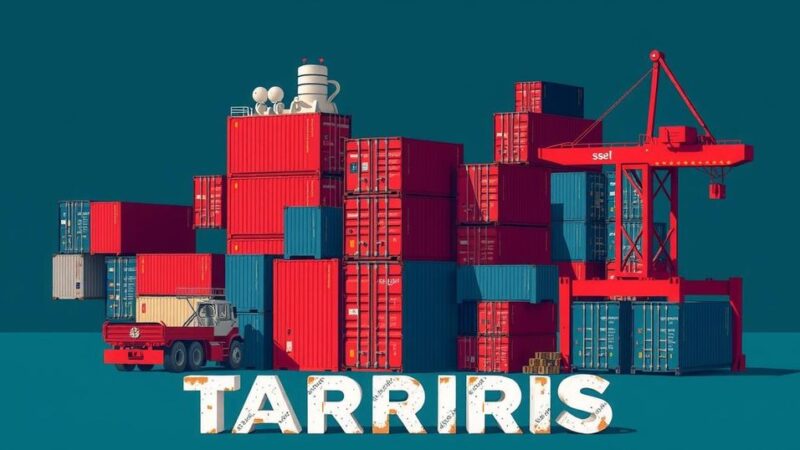President Trump has announced new global tariffs that include a 10 percent baseline tariff starting April 5. Major trading partners like the EU and China face higher rates reaching 54 percent for China. Exemptions are granted to Canada and Mexico, while significant changes are noted in the importation of small parcels from China. Further tariffs on autos and other sectors are set to commence soon.
In a significant economic maneuver, United States President Donald Trump recently introduced extensive tariffs that he describes as a “declaration of economic independence.” A new “baseline tariff” of 10 percent will be applied globally, with higher rates for countries identified as malefactors in trade practices.
Starting at 12:01 am on April 5, a 10 percent baseline tariff will be enforced, whereas elevated tariffs for the most egregious offenders will commence on April 9. Major trading partners facing increased tariffs include the European Union at 20 percent and China at 34 percent, which accumulates to a 54 percent tariff when combined with an earlier 20 percent due to alleged supply chain issues concerning fentanyl. Other countries impacted include India (26 percent), South Korea (25 percent), and Japan (24 percent).
Notably, Canada and Mexico are exempt from these new tariffs as existing rates are maintained under the previous agreements. Trump has imposed 25 percent tariffs on these countries’ imports and specified that goods under the US-Mexico-Canada Agreement will remain unaffected. However, if trade agreements are renegotiated, they might also face the new baseline rate.
Additionally, the recently introduced country-specific tariffs will not accumulate on top of sector-specific tariffs already levied on steel and aluminum. Furthermore, countries such as Cuba, Belarus, North Korea, and Russia are excluded from these new tariffs due to existing sanctions that limit trade potential.
Other tariffs, commencing Thursday, include a 25 percent charge on imported automobiles and related parts. Trump has previously instituted duties on steel and aluminum, which will now extend to products like canned beer and empty aluminum cans. Investigations into imports of copper and lumber are also in progress, with the possibility of further tariffs on semiconductors and pharmaceuticals being considered.
In an unexpected turn, Trump has announced the cessation of a duty-free exemption for small parcels originating from China, potentially impacting the importation of affordable goods. Under this new regulation effective May 2, products from China will incur a duty of 30 percent of their value or $25 per item, rising to $50 per item after June 1. This regulation responds to the growth of Chinese online retailers, leading to a surge in low-cost imports.
In summary, President Trump’s recent tariff announcement introduces significant new tariffs that directly impact various global economies, particularly targeting perceived trade adversaries. The tariffs aim to promote economic independence while maintaining exemptions for Canada and Mexico under existing agreements. Moreover, the cessation of duty-free exemptions for small parcels from China signals a new phase in trade regulation that could reshape import patterns significantly.
Original Source: vietnamnews.vn






